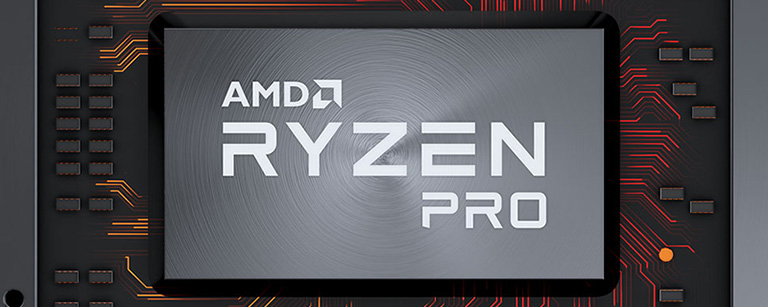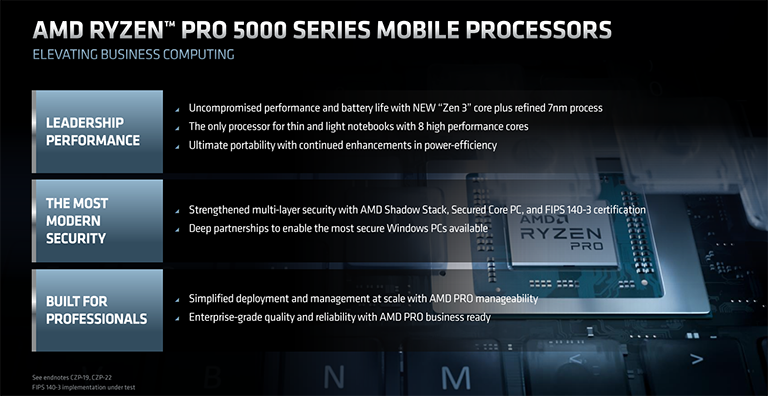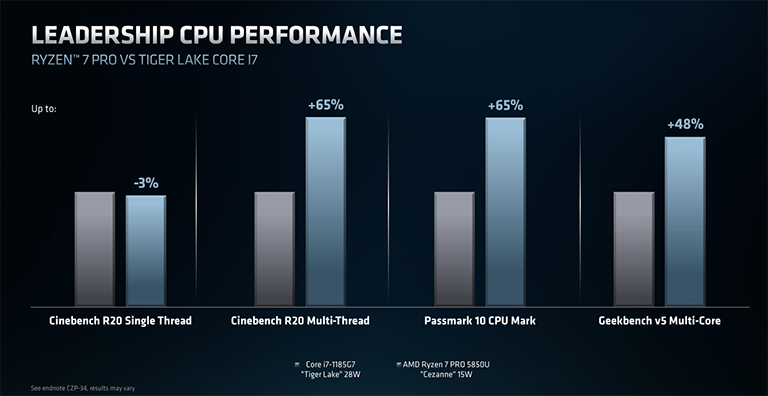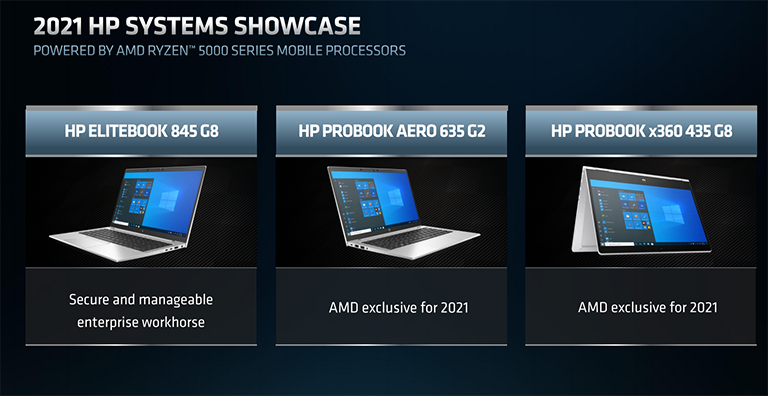
AMD announced Ryzen 5000 Series Mobile processors in January 2021. Designed to fit into performance laptops by offering class-leading CPU performance alongside established integrated graphics, all major manufacturers have used the latest AMD technology inside a wide range of models.
The Ryzen U-Series chips are primed for thin-and-light laptops offering all-day battery life whilst the Ryzen H-Series are geared for higher performance required by gamers and content creators alike.
Appreciating that business customers can also leverage the latest and greatest mobile technology from AMD, today sees the release of three Ryzen Pro 5000 Series Mobile processors which take advantage of the same underlying U-Series performance and add business-related features on top.
The trio uses AMD's latest Zen 3 CPU core and, as the picture shows, have identical specifications to the existing non-Pro models. This translates to processors offering up to eight cores and 16 threads of CPU compute at high frequencies, the latest 7nm production process, and a nominal 15W power budget, which makes them suitable for the thinnest and lightest of laptops.
The key differentiator between the models, therefore, is a collection of security, manageability and business-ready technologies that combine underneath the overarching AMD Pro remit.
On the security front, each Pro chip is outfitted with what AMD calls Memory Guard technology. It serves to protect user data by encrypting the complete system memory contents on-the-fly. This encryption severely limits the scope of attacks to obtain user data held in system memory, according to AMD, which is one of the most common means to steal or access sensitive information in a business environment.
Pro-equipped laptops are also supported by both in-band and out-of-band manageability. The latter is compatible with the open, web-based standard known as Desktop and mobile Architecture for System Hardware (DASH), making it simpler for IT administrators to roll out updates to hundreds of machines at one time without user intervention.
The last piece of the Pro proposition is 18 months of planned software availability, 24 months of planned hardware availability, and feature consistency across the three chips.
Ryzen Pro 5000 Series Mobile offers what appears to be the same performance as its client counterparts - lots of CPU and productivity, all-day battery life - in a business-optimised package.
Coinciding with the announcement, HP and Lenovo are both releasing three laptops apiece this summer.
We'll be planning to take a look at a Ryzen Pro 5000 Series Mobile laptop in the next month or so, to see if it can perform at the same level as a standard U-series model.










